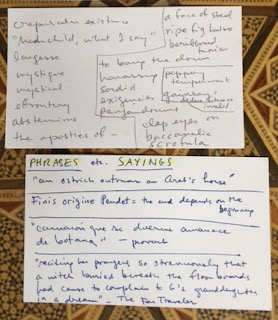 |
| Images courtesy of Pulp-o-Mizer |
"Madam Mayo" is not so much my so-called "platform," but rather, a net that catches certain special fish— the readers who care about the things I care to write about.As ever, I aim to provide posts on a variety of topics that might be, in turn, of use and/or interest for my writing workshop students, and/or for Mexicophiles, and/or for Far West Texasphiles (is that a word?), adventurous readers, and myself.
One of my many motivations for blogging is to iron out my own thoughts, especially on subjects that tend to come up in my correspondence with other writers and in my writing workshops, for example:
(Where do you find the time to write?)
Thirty Deadly-Effective Ways to Free Up Bits, Drips &
Thirty Deadly-Effective Ways to Free Up Bits, Drips &
(What do you think about social media?)
Once in a zera-striped-chartreuse moon of Pluto I touch on nonwriterly topics:
Yet one more reason to check in with this blog is for announcements about my publications and interviews:
To share my talks and podcasts:
Ellen Cassedy and Yermiyahu Ahron Taub on Translating
Blume Lempel's Oedipus in Brooklyn from the Yiddish
Blume Lempel's Oedipus in Brooklyn from the Yiddish
> More interviews here.
> Your comments are always welcome. Write to me here.
P.S. For those of you who are writers / bloggers, herewith the top five things I would have done differently back in 2006 had I known what I know now:
1. Use WordPress
2. Post once per week, something verily crunchy, otherwise take a vacation;
3. Post interviews with other writers more often;
4. Maybe tweet the link to a post once or twice; otherwise do not waste time with social media;
5. When possible and when there is substantive content, upload the bulk of that content to the webpage, not the blog itself (because of those scraper sites).
(Your comments are especially welcome on this subject. Write to me here.)
P.P.S. Yep, one of these days I will move the whole enchilada over to WordPress. It's still on my to-do list... [UPDATE JANUARY 2019: This blog is now on self-hosted WordPress at www.madam-mayo.com]
1. Use WordPress
2. Post once per week, something verily crunchy, otherwise take a vacation;
3. Post interviews with other writers more often;
4. Maybe tweet the link to a post once or twice; otherwise do not waste time with social media;
5. When possible and when there is substantive content, upload the bulk of that content to the webpage, not the blog itself (because of those scraper sites).
(Your comments are especially welcome on this subject. Write to me here.)
P.P.S. Yep, one of these days I will move the whole enchilada over to WordPress. It's still on my to-do list... [UPDATE JANUARY 2019: This blog is now on self-hosted WordPress at www.madam-mayo.com]
















